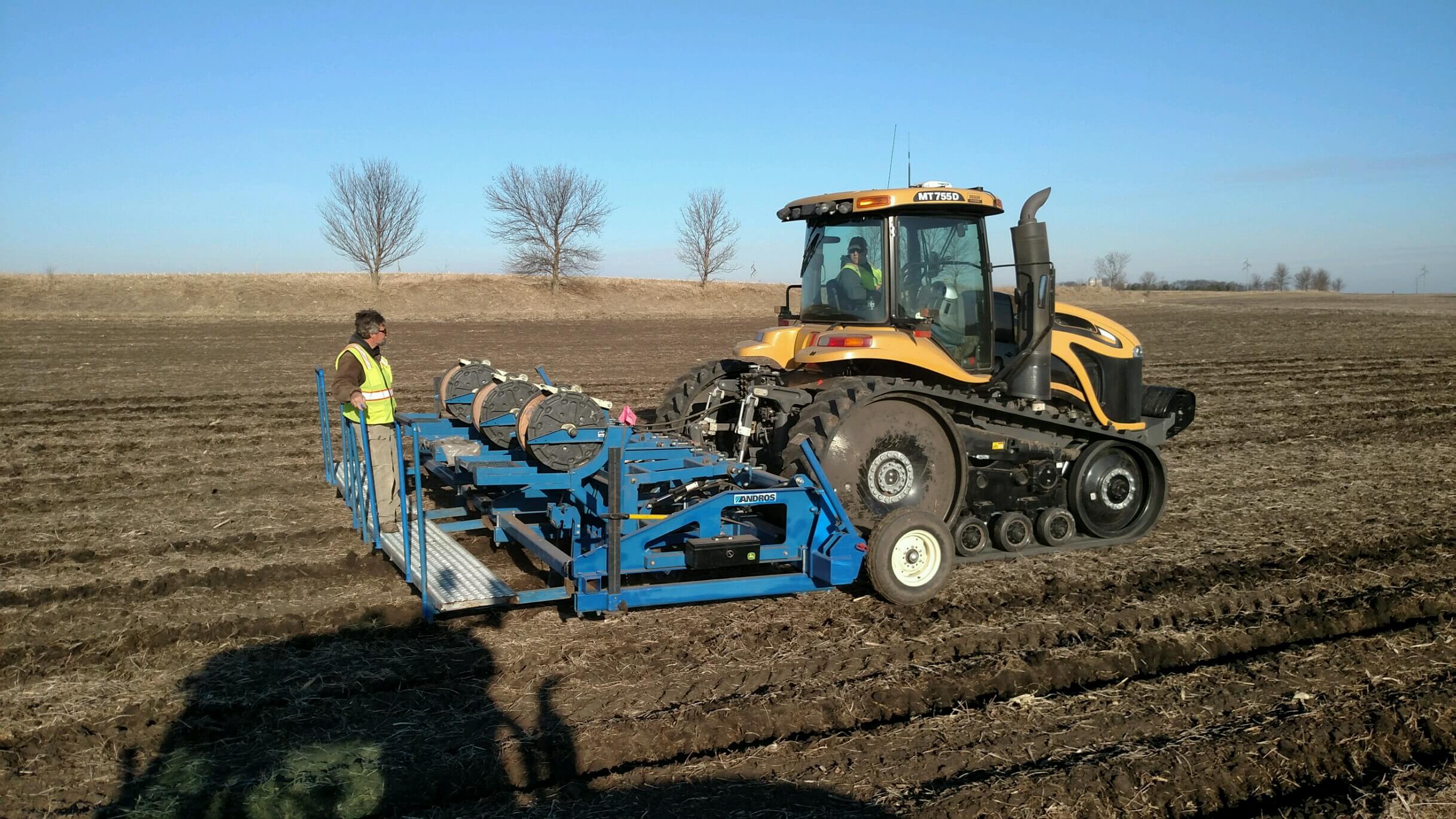 Reading Time: 2 minutes
Reading Time: 2 minutes
(Velde installed the in-ground drip irrigation system in 2017)
Written by Jonathan Eisenthal
The rise in technology is changing how we farm. For example, today’s farmers have the ability to know, in real time, exactly how much moisture and what volume of nutrients lay in the soil.
Yellow Medicine County farmer Brian Velde is testing the impact of these next generation insights as part of the Minnesota Corn Innovation Grant Program, which funds farmer-led research bringing novel solutions to prevent nitrogen and phosphorous loss on the farm.
Through the program, Velde is testing in-ground drip irrigation on a 60-acre field to see how much it might impact yield. That project started in 2017. The irrigation system controls are accessible on Velde’s iPhone. Whenever moisture or nutrients are needed, Velde opens the app and presses a button.
Last year Velde learned about a company called Teralytic, which has designed probes to place in the soil to monitor nitrogen and other nutrients, and relay the information wirelessly, in real time. He was so intrigued, he applied for a second Innovation Grant and received funding. Delivery of the probes, purchased last year, has been delayed, and so the project will start next year.
Velde reported he is in the third year of the sub-surface irrigation and nitrogen management project. The wet summers have made the irrigation aspect of his study tough to measure at times, but he has successfully used the program for nutrients.
“Instead of having a lot of nitrogen pre-applied, this allows us to apply the nitrogen as the crop demands it,” he said. “One of the peak demand periods is the couple weeks before and the week after tasseling. The corn plants are consuming seven to ten pounds of nitrogen per acre every day in that timeframe, and we can feed them exactly what they need, right through the drip irrigation tape.”
Every Monday morning during growing season, Velde takes tissue samples and tests them to assure that the plants are getting enough food. He tests in the sub-irrigation area, and also in one of the non-irrigated check-strips where he follows a conventional program of pre-plant nitrogen application. The tissue samples show that the irrigation zone plants have slightly higher nitrogen concentrations, which may favor optimal yields. In 2017, when the region experience drought, Velde saw a dramatic difference in yields, between irrigated and non-irrigated parts of the field.
But Velde can’t wait to put the two pieces together, when the wireless soil probes finally become available.
“The beauty with this probe is that it gives you a live, instant read-out of concentration levels,” Velde said. “How much nitrogen did the soil lose after the big rain event? Where in the soil profile is the nitrogen? How much nitrogen is the soil mineralizing right now? If this probe can actually detect these things, it should revolutionize agriculture.”
Interested in taking part in the 2020 Innovation Grant Program? Learn more about the program and how to apply here.

